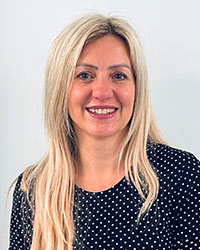C3 and C4
Immunology
Description
The complement system is an integral part of the immune defence system. It is comprised of 9 major proteins (C1-C9), along with regulatory proteins. The primary complement pathway involves recognition, activation and membrane attack mechanisms. The classical pathway is activated by immune complexes starting at C1, which then activates C4 and continues on to C2 and C3. The alternative pathway bypasses C1, C4 and C2, and begins at C3 in response to microbial surface antigens such as LPS [1,2]. Both pathways converge at C5 and cause activation of C5-C9 resulting in formation of the membrane attack complex (MAC). During activation of the classical pathway, the C4 breakdown product C4b forms part of the classical pathway C3 convertase. C4b and C3b are involved in the formation of classical pathway C5 convertase. Alternative pathway C3 convertase and C5 convertase are formed using C3b and activated factor B (Bb) [1,3]. If classical pathway activation or C4 deficiency is not responsible for low C4 concentrations, the Mannose binding lectin (MBL) pathway should be investigated [2,3]. Complement components are rapidly synthesized following trauma or inflammation as part of an acute phase response. This acute phase response may be sufficient to prevent a fall in serum concentrations below the normal range, even when complement activation may be occuring. Low levels of C3 and/or C4 can indicate that there is an increase in consumption or decrease in synthesis. Low concentrations can also be found in congenital and aquired conditions, such as gene defects and liver failure. The heterozygous deficiency state for C4 can be seen in some patients with SLE. C3 and/or C4 concentrations can also fall in patients with cryoglobulinaemia, nephritis, angioedema and SLE [1].
Indications
Diagnosis and monitoring of SLE, HAE, renal disease, vasculitis, rheumatoid arthritis, cryoglobulinaemia and C3 nephritic factor.
Sample Type
2mL Serum (Gel 5mL Yellow tube) or 2mL EDTA Plasma.
Requests from outside Sheffield: transport at ambient temperature via Royal Mail or Courier.
Reference Range
C3:- 0.75 to 1.65 g/L.
C4:- 0.14 to 0.54 g/L.
Reference range established in house and PRU collaboration.
Turnaround Time
Within 2 days
Testing Frequency
Daily
References
PRU Handbook of Clinical Immunochemistry. 9th Edition. 2007. [Ref 1]
Mollnes TE, et al. Complement analysis in the 21st century. Mol Immunol. 2007. 44:3838-3849. [Ref 2]
Wen L, et al. Clinical and laboratory evaluation of complemt deficiency. Curr Rev Allergy Clin Immuno. 2004. 113:585-593. [Ref 3]
See Also
C1 inhibitor quantitation and function
C1q
C2
C5-C9
CH50
AP50
MBL
Please note: the above information is subject to change and we endeavour to keep this website up to date wherever necessary.
Your contact for this test

Clare Del-Duca BSc (Hons) Biomedical Science, MSc Pathological Science
Laboratory Manager - Immunology and Protein Reference Unit
You are enquiring about
C3 and C4